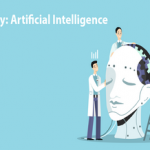Mobility
While mobile usually refers to mobile device, mobile apps, mobile platform. Mobility is a term describing not only the device but access for employees accessing corporate data from any location, cloud storage and cloud API services, mobile context awareness, integration with a variety of Internet of Things devices. It’s access to the data, products, and services enabled by being mobile.
Context-Aware
Context-aware mobility provides the ability to dynamically capture and use contextual information about mobile assets to optimize, change, or create communications flow and business processes. Contextual information can be collected for any mobile asset involved in a business process, and this includes not just devices and products but also people. For instance, a mobile asset can be a worker, a customer, or a patient, or it can be a pallet of finished goods. (Sources Cisco)
Context Awareness provides intelligence or information based on context. Mobility offers the opportunity to gain awareness of the individual and their interactions. That means location, biometrics, weather data, data about other individuals, and any other relative data based on mobile context will be used to deliver a fuller environmental awareness. (Sources: Frank Yue, LTE World Series)
Wireless technology communication protocols:
Test Engineers need to be familiar with various parts of the Internet of things and mobility. Comprised of sensors, embedded systems, connectivity and remote control by various communication protocols, these communications differ in function, network infrastructure, power consumption, and range.
- Wi-Fi
- Bluetooth, and its varieties, (Bluetooth low energy, ANT, ZigBee, etc)
- RFID and NFC
- GPS
- Cellular – 3G, 4G LTE, WiMAX
Wearable
Wearable computers, also known as body-borne computers or wearables are miniature electronic devices that are worn by the bearer under, with or on top of clothing. This class of wearable technology has been developed for general or special purpose information technologies and media development. Wearable computers are especially useful for applications that require more complex computational support than just hardware coded logics. (SourcesWikipedia)
Remote control
Remote control is a component of an electronics device—most commonly a television set, DVD player, or home theater system—originally used for operating the device wirelessly from a short line-of-sight distance. Remote control has continually evolved and advanced over recent years to include the internet, Bluetooth connectivity, motion sensor-enabled capabilities and voice control (Source: Wikipedia)
Proximity sensor
A proximity sensor is able to detect the presence of nearby objects without any physical contact. A proximity sensor often emits an electromagnetic field or a beam of electromagnetic radiation (infrared, for instance), and looks for changes in the field or return signal. (Sources Wikipedia)
NFC
NFC, Near Field Communication, is a short-range wireless technology used as a method of transferring data over short distances between two compatible devices. Now commonly used for retail transaction payment (Source: Wikipedia)
RFID
Radio-Frequency Identification (RFID) is the use of radio waves to read and capture information stored on a tag attached to an object. A tag can be read from up to several feet away and does not need to be within direct line-of-sight of the reader to be tracked. (Sources www.epc-rfid.info/rfid)
RFID technology is used in smart cards, tracking- for dogs, livestock and everything! RFID technology is everywhere. It’s the duct tape that holds the digital world together.



















